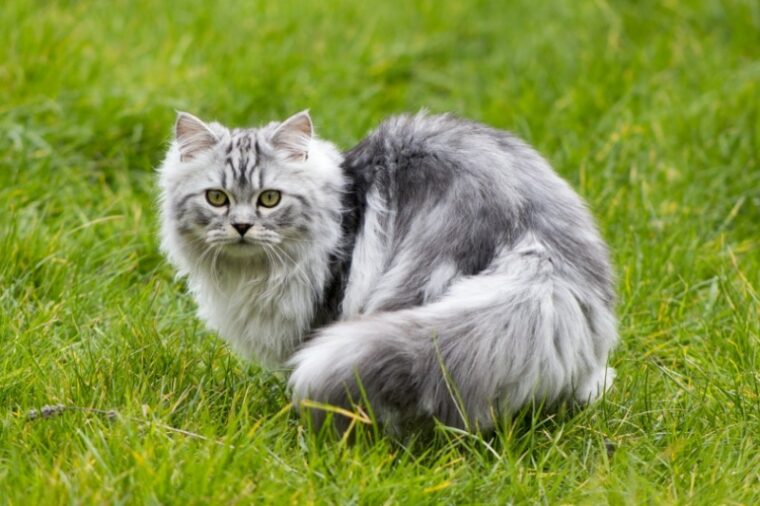
Click Below to Skip Ahead
One of the most instantly recognizable cat breeds in the world, Persians are also one of the oldest and most popular. Their plush coats, huge eyes, and smushed faces may be their trademark, but it’s their sweet, laid-back personalities that make the Persian truly one of a kind.
Breed Overview
Height:
10 – 15 inches
Weight:
7 – 12 pounds
Lifespan:
12 – 17 years
Colors:
Tabby, bi-color, parti-color, smoke, shaded, silver, golden, black, white, blue, red, cream, chocolate, lilac
Suitable for:
Indoor-only living, calmer and quieter households
Temperament:
Gentle, quiet, affectionate, responsive, playful
While this breed comes with the potential for some health issues, they also won’t fit into every household, given their preference for quiet living. Before you fall hard for this cat with the soft fur, keep reading to learn more about the Persian cat breed and what it takes to give one a happy home!
Persian Cat Characteristics
Persian Kittens
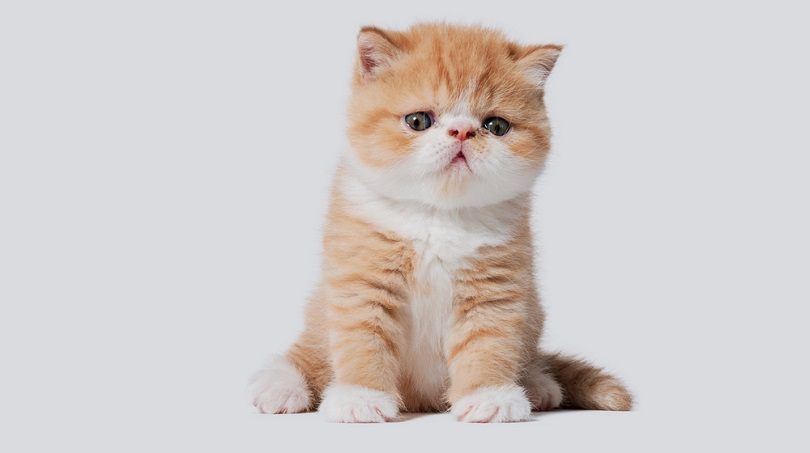
Because of their popularity, buying a Persian kitten won’t be cheap. Persians with show or championship bloodlines are more expensive, as are those with rare or unusual coat patterns and colors.
Many breeders charge more for the breeding or showing rights to a kitten as well. Unfortunately, Persian cats are prone to numerous health problems (more on these later!). Do your research when picking a breeder and make sure you select one who performs all recommended health and genetic testing on their cats.
Buying a Persian from a “backyard breeder” who doesn’t prioritize producing healthy kittens may be cheaper at first, but you could wind up with expensive medical bills in the long run.
If you prefer to adopt your new Persian, many purebred and breed-specific cat rescue groups can be found nationwide. Your local shelter is another option, especially if you’re patient. The cost to adopt a Persian will vary but is generally much cheaper than buying from a breeder.
Temperament & Intelligence of the Persian Cat
Laidback and gentle, Persians love people but don’t demand attention like some breeds. They are responsive and expressive, making them excellent companions, especially for those living alone. While they are playful, Persians are mellow and not as active as many cats, preferring to use furniture as a bed rather than a playground. They are not considered the most clever of cat breeds, however, and they tend to learn slowly.
Are These Cats Good for Families? 👪
Persians tend to prefer quiet homes, with a consistent routine and calm atmosphere. Overall, they are not a breed that will jump right into the chaos of a busy, active family. While they can adapt to life with kids and noise thanks to their naturally sweet personalities, they will need socializing and reassurance to do so.
Because they are quiet and less active, Persians are ideal pets for an apartment or small-space living as well as the elderly. Again, their mellow nature makes them capable of enjoying life with families and kids but you’ll need to be sensitive and allow them the space to adapt. They may do better with older children who are less rowdy and can be taught how to handle their cats gently.
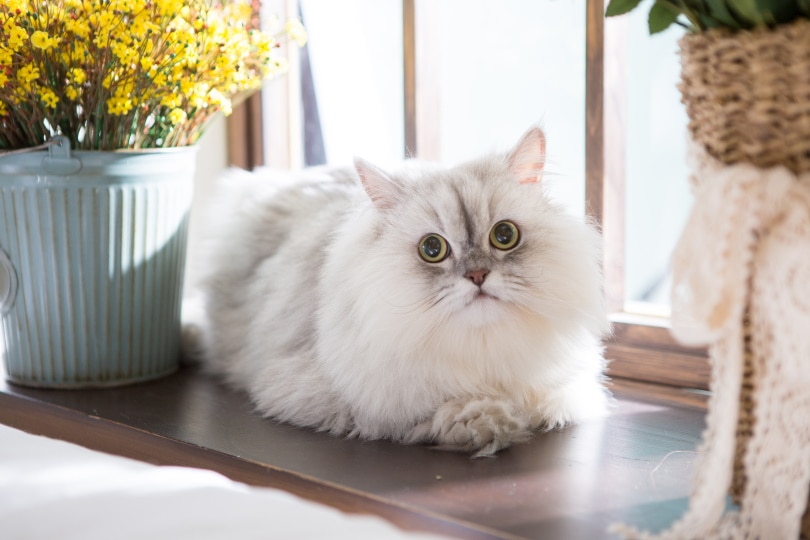
Does This Breed Get Along with Other Pets?
Because of their laid-back personalities, Persians can coexist well with many other types of pets. They are generally non-aggressive towards other cats when introduced and supervised properly. Persians can also live with dogs, especially when they’re raised with them.
However, Persians may become stressed by the antics of young or energetic dogs, so watch carefully for signs of anxiety. Persians are not known for their predator instincts and may be less likely than other cat breeds to bother small, exotic pets. Despite this, small prey animals may still suffer a stress response to the presence of the cat.
Things to Know When Owning a Persian:
Think your home (and lap) might be the perfect landing place for a Persian? Here’s what you need to know before you commit to owning a Persian cat!
Food & Diet Requirements 
Persians should do well on nutritionally-balanced canned or dry cat food. Most owners choose a commercial diet because it’s the easiest way to ensure your cat receives all the essential vitamins, minerals, and amino acids. Homemade diets can be an option as well but should be prepared with input from a veterinarian to make sure they’re balanced.
Because they aren’t the most active of cat breeds, Persians are prone to becoming overweight. Careful monitoring of their weight and calorie control is key to keeping your Persian slim. Your vet can help you calculate how many calories your Persian needs each day.
Mealtime can be a bit trickier for Persians due to their flat faces. They may have trouble picking up dry kibble, especially from deep food bowls. Eating canned food can be messy so be prepared for some face wiping as needed to keep your cat clean.
Exercise 🐈
Coaxing your Persian to exercise may take a bit of effort, especially once they grow into adulthood. Their energy levels are firmly on the mellower end of the scale, although they do have a playful nature. Take advantage of your Persians desire for your company by choosing interactive toys, like teaser wands to keep them active and strengthen your bond at the same time.
The flat faces of many Persians can cause them to have trouble breathing, so watch them carefully for any issues during playtime.
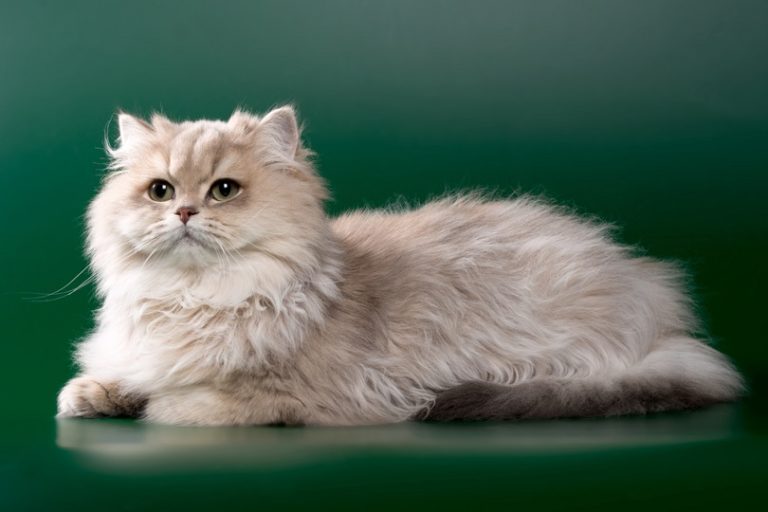
Training 🧶
While it is possible to train a cat, some breeds take to it better than others. Persians tend to be slow learners, and plenty of patience is required on your part. Positive, reward-based training is generally most effective.
Persians, like most pets, usually learn better when they’re young. Kittenhood is also the best time for your Persian to become accustomed to any grooming activities and routines you’ll be doing throughout their lives.
Grooming ✂️
The luxurious coat of a Persian is one of their most well-known characteristics. However, keeping it looking neat and tidy takes some effort. Persians need daily brushing, a chore that could take up to an hour to remove all mats and tangles.
Persians often need a sanitary cleaning as well, because the long hair on their hindquarters becomes soiled when they use the litter box. Some owners opt to keep their cat’s fur-trimmed in this area for cleanliness or to shave the whole coat, especially in the summer months.
Because of the unusual shape of their faces, Persians are prone to tear drainage and staining issues around their eyes. Wiping near the eyes and the face folds should be a regular part of your Persian’s grooming routine.
Finally, keep your Persian’s nails trimmed and either brush their teeth or use other dental products as recommended by your veterinarian.
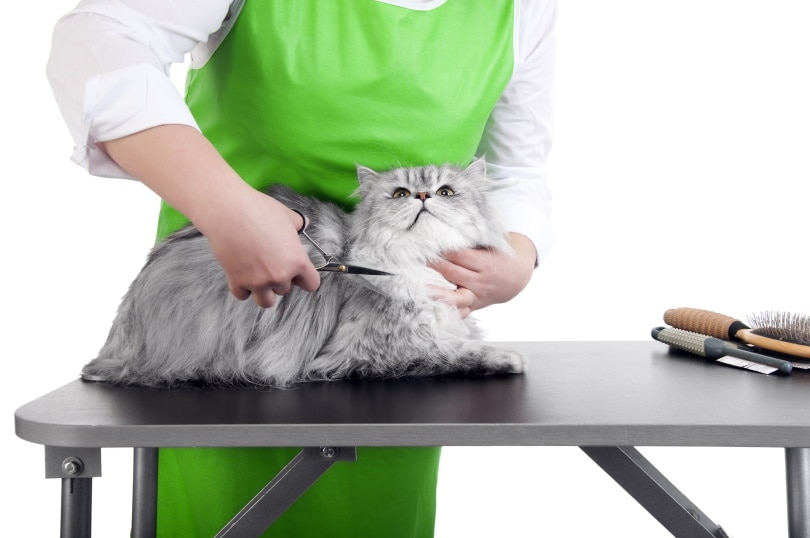
Health and Conditions 🏥
Like many of the most popular dog and cat breeds worldwide, Persians are prone to several health conditions. In fact, a recent study found that almost two-thirds of Persians suffer from at least one medical condition. For this reason, choosing a reputable breeder is even more vital for future Persian owners.
Minor Conditions
Serious Conditions
Male vs Female
Male Persian cats are generally bigger than females and are often thought to be more affectionate. Un-neutered males may be more aggressive towards other cats, especially of the same sex. They also spray to mark their territory and have a strong odor overall.
When unspayed, female Persians will experience a heat cycle every six months. During this time, they may become moody and vocal, in addition to the mess. If you aren’t planning to breed your Persian cat, spaying or neutering is best for their overall health and makes them better pets as well.
If spayed and neutered, male and female Persians are similar in personality and the choice between them becomes more a matter of personal preference.
3 Little-Known Facts About the Persian Cat
1. They are one of the oldest cat breeds.
Cats resembling modern Persians are pictured in hieroglyphics dating back to 1684 B.C.
2. Despite their name, we don’t know exactly where they originate.
The ancestors of modern Persians were first brought to Europe in the mid-1800s. It was European cat lovers who further developed and named the breed, based on the country (Persia) the cats were brought from. However, it’s unknown whether the cats originated from Persia itself or whether the country was just another stop on their journey.
3. They are nicknamed “dog cats.”
Persians are known for their extremely affectionate personalities and deep love of human companionship. Because of this, they’re often called “dog cats,” since they display behaviors more typical of dogs, such as running to greet their owners when they get home.
Final Thoughts
Persian cats make charming pets for many people, thanks to their affectionate and responsive nature. If you’re looking for a cat who thrives in chaos, however, this laid-back breed might not be the one for you. While they’ll do their best to get along with everyone, it doesn’t mean they’ll always enjoy themselves doing it. Before bringing home any pet, including a Persian, think carefully about whether they are a good match for your family. Every pet deserves a loving home, but that doesn’t mean every home is the best fit for them.
Featured Image Credit: Cattrall, Shutterstock








